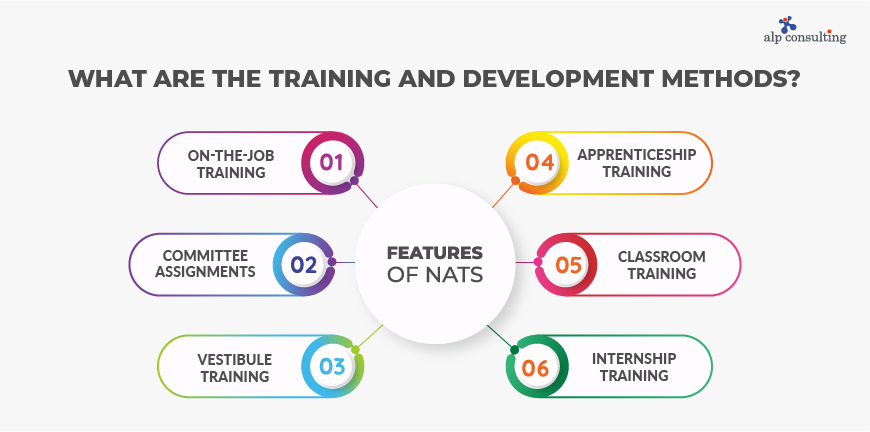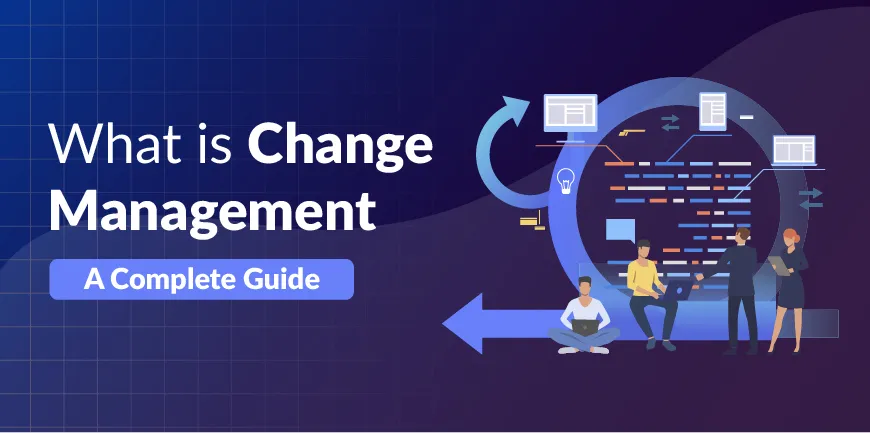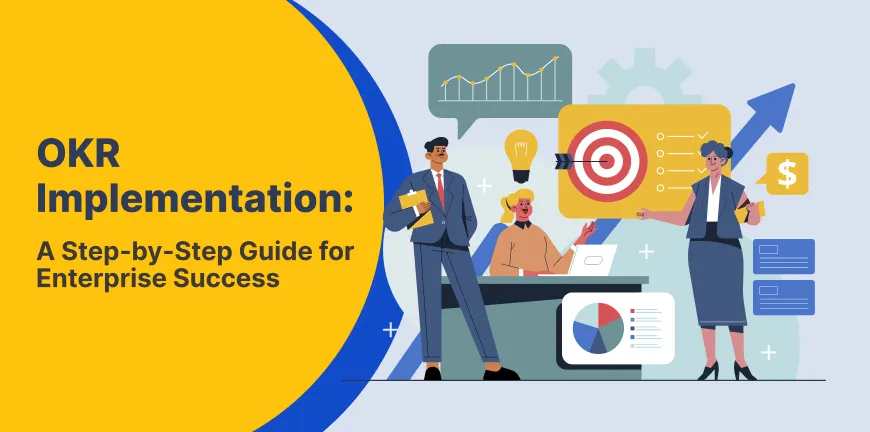
Manual Payroll vs. Automated Payroll System: Pros and Cons
09/12/2025
Key Compliance Checklist for Employers Using Contract Staff
09/12/2025- What is Employee Training and Development?
- What are the 6 Training and Development Processes?
- What is the Importance of Training and Development?
- What are the Training and Development Methods?
- What are the Objectives of Training and Development?
- What are the Benefits of Training and Development?
- What are the Types of Training and Development?
- What is the Difference Between Training and Development?
- Conclusion
More than half the workforce has mentioned that they require extra training to perform better in their current roles.
With AI (Artificial Intelligence) and other technologies advancing rapidly, the importance of training and development has been growing at lightning-fast speeds. Deloitte predicts that 54% of all employees may require upskilling or reskilling in the next three years.
Training and development play an important role in positioning a company’s success. The wake of the advancement of technology has resulted in tight competition and a rise in customers’ expectations of quality and service at lower costs. It is also becoming more important globally to prepare workers for new jobs.
Training and development in HRM (Human Resource Management) is one of the most essential functions in an organization and is a significant player in deciding a company’s success. Training and development culture plays a key part in making a company a wonderful place to work, according to a new study. The report released by the Society for Human Resource Management (SHRM) explores the L&D horizons as organizations are grappling with skill shortage.
The need for training and development in India has risen over time due to the changing workplace dynamics and the accelerated advancement in technology. Businesses are having to constantly evolve to stay ahead in the competition. To achieve this, having your employees put forth their best capabilities is essential, for which constant upgradation of skills is vital, which is why businesses must invest in employee training and development programs for better outcomes for their organization.
What is Employee Training and Development?
Employee Training and development is an ongoing process where companies help or train their employees to acquire the knowledge and skills needed to perform better at their job roles, as well as reach their full potential and give their best performance. Training employees is teaching them how to perform a specific task or procedure. It is focused on short-term gains—enabling employees to become better at their current jobs.
Training and development in HRM (HR’s side) key findings include-
- 67% of HR (Human Resources) managers have increased the budget for Learning and Development programs.
- 46% have specific training processes in place for new graduates joining the workforce.
- 42% are offering training to support the re-entry of retired employees.
- With a higher budget approval, 72% of HR managers would readily invest in mental health and well-being.
- 77% of HR managers are looking to focus on life skills.
From an employee’s point of view, studies found that
- 75% of employees are satisfied with the training and development in their offices.
- 76% are likely to stay with a company that provides training.
- 55% say they require additional training to do better in their roles.
What are the 6 Training and Development Processes?
The right training and development programs can improve employee performance, increase productivity, and help organizations remain at the top of the table. The HRM team in an organization plays a vital role in developing programs that benefit employees.
The main processes involved in training and development are as follows-
1. Needs Assessment:
The needs assessment involves certain steps:
Identification of knowledge, skills, and competencies required for job roles and organizational goals. Conduct a thorough analysis of performance gaps and areas for improvement. Collection of data through interviews, surveys, performance evaluations, and other assessment methods is a crucial step. It is also essential to determine the training needs of teams or the entire organization.
2. Design and development
This process involves designing and developing learning goals by choosing appropriate training methods, creating the right learning materials, formulating proper training and development strategies, developing training schedules and modules that align with the objectives and desired outcomes based on the identified needs.
3. Delivery
This involves the implementation of training programs through various training modes like online, offline, on-the-job training, etc. Schedule and coordinate training sessions, considering factors such as employee availability and operational requirements. Prepare the training environment- including appropriate facilities, equipment, and technology- and assign trainers or facilitators who have expertise in the subject matter and effective instructional skills. Provide opportunities for practice, feedback, and reinforcement of learning.
4. Evaluation
During the evaluation there takes place an assessment of the effectiveness and impact of the training program by using various evaluation methods, such as tests, quizzes, observations, simulations, and surveys. The right evaluation reveals areas of skill improvement, behaviour changes, and performance outcomes. This helps companies identify their areas of weakness and take necessary measures to make future improvements.
5. Implementation
The implementation of the Training and Development program involves rolling out the training program to the target audience by communicating the purpose, objectives, and benefits of the training to the prospective employees, followed by the appropriate documentation of training records and completion certificates.
6. Post-Training Support and Follow-Up
On completion of the training, the training and development team will reinforce learning through post-training activities and support mechanisms.
They extensively guide you by offering job aids, reference materials, or online resources to assist with on-the-job applications. The follow-up and post-training support fosters a learning culture that encourages continuous development and growth.
What is the Importance of Training and Development?
1. Skill Enhancement
Training programs provide individuals with opportunities to acquire and develop new knowledge, job-relevant skills, technical expertise, soft skills like communication, problem-solving skills, and leadership abilities. This enables employees to perform better in their roles, contributing to the organization’s success.
2. Increased Productivity and Efficiency
Well-trained employees are more proficient in their roles, as they understand their responsibilities better, optimize their work processes accordingly, leading to increased productivity and efficiency.
3. Adaptation to Technological Advancements
In today’s rapidly evolving business landscape, technological advancements are reshaping industries. By providing training and development programs, employees can stay updated with the latest technologies, tools, and software relevant to their role, enabling the organization to embrace innovation, leverage technology effectively, and remain competitive in the market.
4. Employee Engagement and Retention
Training and development programs instill a sense of fulfilment and security in an employee, demonstrating the commitment of the company towards their growth and career advancement. It fosters a sense of engagement, loyalty, and job satisfaction among employees, leading to reduced turnover, higher retention rates, and associated recruitment costs.
5. Succession Planning and Leadership Development
Training and development programs identify and nurture high-potential employees for future leadership positions. Organizations can ensure a pipeline of capable leaders who can drive the company’s growth, make strategic decisions, and boost productivity. It also ensures continuity, stability, and efficiency, which is vital for an organization’s stable growth.
6. Improved Employee Morale and Motivation
Training and development initiatives boost employee morale by showing that the organization values and invests in its employees. When individuals receive growth opportunities, they feel more motivated, engaged, and satisfied with their work.
7. Improved Customer Satisfaction
Well-trained employees are more capable of understanding customer needs and providing exceptional service. Training programs enhance employees’ customer service skills, communication abilities, and problem-solving techniques. Satisfied customers lead to increased customer loyalty, positive word-of-mouth, and improved business reputation.
What are the Training and Development Methods?
There are 6 training and development methods:

1. On-the-job training
Trainees are placed on a regular job and are taught the necessary skills on the go under the guidance of a supervisor or instructor. The three techniques for the on-the-job training are-
- Coaching- A person-to-person interaction.
- Mentoring- Junior employees learn under the guidance of seniors.
2. Committee assignments
The trainee acts as a part of a committee, observes activities, and investigates organizational problems.
3. Vestibule training
In a vestibule setup, with the actual job simulations, expert trainers are employed to use the necessary equipment and machines used in the workplace.
4. Apprenticeship training
Theoretical and practical training is given to trainees under government-established institutes, and they are also paid a stipend during the period. Some of the most significant Apprenticeship programs that Alp facilitates are NAPS (National Apprentice Promotion Scheme), NATS (National Apprenticeship Training Scheme), DDUGKY (Deen Dayal Upadhyaya Grameen Kaushalya Yojana), HTP (Hire Train Place), HTD (Hire Train Deploy), etc.
5. Classroom training
Training is provided in company classrooms and educational institutions. Group discussions, case studies, and audio, video visual aids are all part of the training mode.
6. Internship training
It is a joint effort of an educational institution and business firms to provide training to candidates, making sure there is the right mix of theory and practical knowledge, making them job-ready.
What are the Objectives of Training and Development?
The purpose of training and development is-
- Employee well-being, promotion of growth, and career advancement.
- It can lead to the production of future leaders.
- Results in low attrition rates.
- Employee satisfaction leads to better employee performance and greater organizational productivity.
What are the Benefits of Training and Development?
The impact of training and development is as follows-
- Higher employee satisfaction and morale.
- Reduced employee turnover.
- Hard-working employees.
- Improved efficiency, resulting in financial benefit.
- Increased innovation and creativity.
- Improved engagement.
- Better problem-solving skills.
- Improved retention and loyalty.
What are the Types of Training and Development?
Essentially, Employee training and development programs can be classified as:
- Orientation training
- Leadership training
- Technical training
- Compliance training
- Onboarding training
- Product training
- Soft skills training
- Sales training
- Reskilling and Upskilling

What is the Difference Between Training and Development?
Basis Training Development
| Meaning | A process in which employees are allowed to develop skills and knowledge that are job-relevant | An educational process that concerns the growth of the individual overall |
| Time limit | Short term | Long term |
| oriented | Job oriented | Career oriented |
| Suitability | For technically inclined staff | For Managerial staff |
| Trainee level | Non-managerial | managerial |
| Skills | Technical skills only | Technical, soft, and conceptual skills |
| Objective | Improve job performance | Prepare employees for future career challenges |
Conclusion
The question, however, remains as to what the implications and the contribution of training and development are, rather than how much organizations are spending on it. In order to position yourself as a market leader, as an organization, you will need to emphasize the kind of programs you use to improve performance and productivity.
Alp Consulting is one such firm that facilitates clients in undertaking training and development programs such as NAPS (National Apprenticeship Promotion Scheme), NATS (National Apprentice Training Scheme), HTP (Hire Train Place), HTD (Hire Train Deploy), etc., for candidates, helping them acquire candidates who will prove to be an asset to their organizations boosting their productivity.
Contact Us For Business Enquiry

Suresh Ramkrishna
Suresh Ramkrishna is the Operations Manager at Alp Consulting Ltd., with over 30 years of extensive experience spanning recruitment operations, sourcing, supply chain management, and client relations. At Alp, he leads the Search & Staffing Practice, specializing in bilingual and niche skill hiring while overseeing Japanese language and TITP (Technical Intern Training Program) initiatives. He also manages NAPS (National Apprenticeship Promotion Scheme) training programs, fostering skill development and workforce readiness across industries. Previously, he spent over two decades in the apparel export industry, managing vendor development and international sourcing for top global brands. Suresh’s leadership blends strategic talent acquisition with operational excellence across diverse industries.






